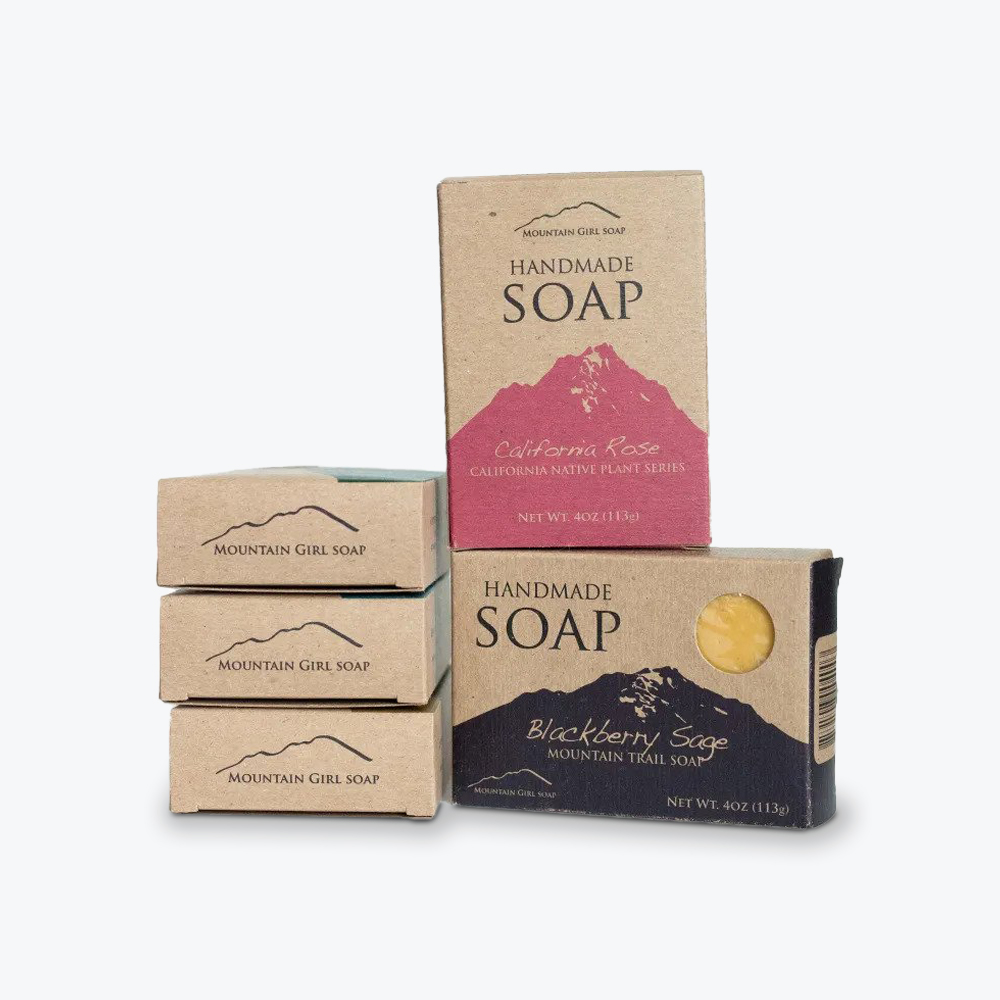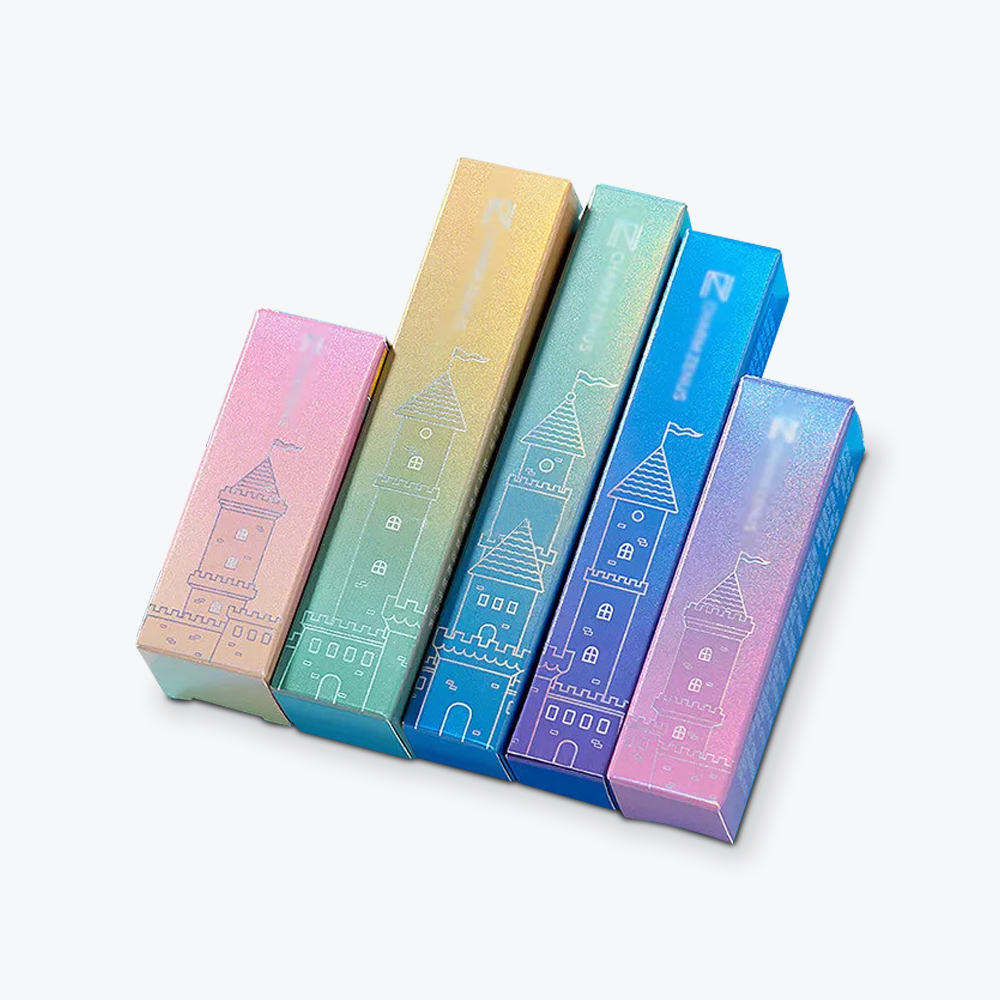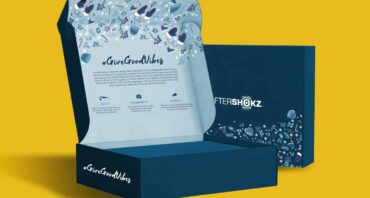Soap packaging has come a long way from bland cardboard boxes. With the growing popularity of artisan cleansers like handmade soap and eco-friendly soap—which is expected to become a $224.5 million market by 2031—soap bar packaging has also evolved to not only ensure that the delicate soaps are well-protected but also to enhance customers’ experiences with unwrapping and learning more about your products.
Now, don’t get us wrong. Soap boxes are still very much alive, but over the years, they’ve taken on a different look in both form and function. From environment-friendly packaging and custom soap box design to luxury packaging and minimalistic packaging, modern packaging for soap bars has set a new standard.
There’s a growing interest not just in eco-friendly soap but also in sustainable packaging for such products. The increased consumption of soap—whose production is projected to grow by 6.7% from 2020 to 2030—has led to an increase in soap packaging waste. Common materials used in soap packaging include paper and waxed papers, but other materials like cellophane and polypropylene are also used to some extent. Fortunately, modifications in soap box packaging have helped curb the environmental impact of soap products.
Ready to package soap in a way that makes it stand out? Dive into the rich world of custom soap packaging, from custom wrapping options to sustainable packaging materials.
What Is Soap Packaging?

Soap packaging involves storing soap products in containers or wrapping them in materials like paper. With well-designed soap packaging, you can grab your customers’ attention, set your products apart, and enhance your soap branding. You can incorporate components like your logo, tagline, and brand colors that help drive awareness.
Soap packaging can also drive your brand narrative. Including information such as scent blends offers a glimpse into your product’s quality, while incorporating information about your brand, such as your core values or sustainability goals, can potentially resonate with your target consumers.
Types of Soap Packaging
Let’s take a closer look at some of the commonly used types of soap packaging.
In the following table, let’s review the different types of soap packaging and their pros and cons:
|
Packaging Type
|
Pros
|
Cons
|
|
Boxes
|
· A classic and convenient option
· Gives you ample space for custom designs
· Can be made with eco-friendly materials like recycled cardboard or kraft paper
· Provides an opportunity for brands to provide an engaging unboxing experience
|
· While cardboard boxes are durable, they’re not immune to moisture
· When not packed carefully, these boxes may get dented or crushed
· Potential to create waste
|
|
Bags
|
· A range of options for bag choices, such as organza, burlap, and mesh
· A great way to provide customers with a glimpse (and whiff) of your product while still protecting your soap
· When made using natural fibers, these bags can stay aligned with your eco-friendly strategy
|
· May not provide ample protection against moisture
· Bags are not rigid enough to protect delicate soaps
|
|
Paper
|
· Gives you the option to wrap the whole soap in paper packaging or use bands that wrap around the soap
· Minimal waste, especially when made using eco-friendly materials
|
· Paper tends to be fragile
|
|
Plastic
|
· Highly customizable and provides ample protection against moisture
· Durable material that can endure various handling and storage conditions
· Can be made using sustainable materials such as hemp bioplastic
|
· Not as rigid as cardboard boxes
· Can contribute to plastic waste depending on the material
|
|
Rope or String
|
· Simple and fuss-free way to package your soaps
· Can be customized to include a tag or label
|
· Provides minimal protection for your products
|
Aside from these options, you can also look into eco-friendly packaging options for soap products. These include:
- Using packaging made from recycled materials to minimize waste.
- Making custom soap packaging from biodegradable and sustainable materials, such as kraft paper or kraft cardboard boxes, molded pulp, compostable tissue paper, or packaging made from natural fibers like hemp.
- Soy-based inks for printing your labels.
Why Soaps Need Protection

We tend to look at soaps as sturdy blocks that are strong enough to take a fall or two in the shower. But soaps are actually delicate and need a lot of protection so that they don’t get damaged on the way to your local store or home. Whether it’s for a homemade soap or a commercially produced one, soaps are prone to moisture and water damage.
Key Considerations for Soap Packaging
Packaging soaps seems pretty straightforward. Just chuck them in individual boxes or wrappers, and then they’re good to go, right? Well, not exactly. Like most things that play a major role in any business, soap packaging entails a lot of careful planning.
Here are some considerations to keep in mind.
- How do you want your home-made soap packaging to look (and feel)? Do you want them to be fully covered or partially exposed so that customers can get a glimpse—and maybe a whiff of—your product?
- What materials will you likely be using? If you’re using cardboard boxes for packaging, what will these be made from? If you plan to use plastic for some parts of your packaging, will you use recyclable materials?
- Do you sell your soap individually, or do they usually come in bundles?
- The quality of your soap packaging materials plays a big role in how consumers perceive your product. For instance, if you’re using high-quality materials for a small batch of homemade soap, potential customers will likely see it as a premium product. Using substandard materials, on the other hand, can run the risk of your products being forgotten or overlooked.
- Your soap branding is unique, so your soap packaging should reflect that. If you’re making luxury soaps, your luxury soap packaging should showcase that. If you’re focused on making eco-friendly homemade soap, your soap packaging should use sustainable materials to keep it consistent with your branding.
- How well will your chosen soap packaging option protect your products? Soap packaging isn’t all just about making a statement. It also needs to properly protect your soaps, especially during transit.
There are other aspects you need to keep in mind when it comes to soap packaging. Consider the following factors:

- The size and shape of your soaps – Soaps come in various sizes and shapes, from big, rectangle soaps to artisan soaps with uneven edges. Your soap packaging should be tailored to match its size and shape.
- Your budget – This plays a major role in making or choosing soap packaging. If you’re operating on a limited budget, this doesn’t have to mean that your packaging should be ordinary or of poor quality. For instance, you can consider using sustainable alternatives like recycled cardboard or organic fabrics to keep costs down while still doing your bit for the planet.
- Bar soaps or liquid soaps – If you’re making bar soaps, you’ll likely have many more options for soap packaging. On the other hand, you’ll likely be limited to containers, pump dispensers, or plastic pouches for liquid soaps.
- Shipping options – If you’re storing and shipping your products on a larger scale, your products should have ample protection to keep them safe during transit and from high temperatures.
5 Ideas for Soap Packaging Worth Looking Into
Whether you’re going the DIY route when it comes to making your soap packaging or enlisting the aid of a specialist packaging company to design custom boxes for soap packaging, these soap wrapping and soap label ideas will have you excitedly wrapping homemade soap in no time.
1. Eco-Friendly Packaging
Eco-friendly soap packaging refers to recyclable, reusable, or compostable packaging. Typically, environment-friendly packaging materials include recycled cardboard, paper made from sustainable materials like hemp, or compostable tissue paper. One of the advantages to using such options—aside from their lower carbon footprint—is their customizability. You might associate “eco-friendly” packaging with plain brown boxes or paper, but it can still be customized through print or with compostable custom labels for branding.
2. Sleeve or Holster-Style Packaging

This type of soap packaging is a neat way to give a sneak peek of your soap. Like cardboard boxes and paper packaging, they’re also very customizable. For example, with paper or cardboard sleeves, you get to decide on its width.
Holster-style soap packaging is also a great alternative to sleeves. They still offer protection for your soaps while allowing potential customers to pick them up easily and get a whiff of your products. This type of packaging also tends to have more real estate, so you’ll have more room to showcase your branding and brand story.
3. Custom Wrapping
Custom wrapping can be as simple or as elaborate as you want. For example, you can use kraft paper to wrap your soaps, stamp your label, or use custom stickers. Printed labels also provide more information to customers, such as the ingredients list, best applications of the soap, and your company’s details. Aside from kraft paper, you can use tissue paper or even sustainable fabrics to wrap your soaps.
4. Custom Cardboard Boxes

Custom cardboard boxes are a great option if you’re looking for greater versatility and customizability. They come in a range of sizes, shapes, thicknesses, and material types. For example, folding boxes can be customized to have these little windows (window patching) that give customers a glimpse of what’s inside.
You can also consider die-cutting, like cutouts in interesting shapes, and make custom soap boxes with a die cut that allows your soap packaging to stand out. You also have the option to choose either gloss or matte lamination to top off your custom carton box design.
5. Plastic Wraps
Plastic soap packaging has gained a bad rap over the years, but it can still be an effective packaging option for soap products. They’re great for keeping your soaps clean and protected from moisture and contaminants. Plus, you can use sustainable plastics like bioplastics made from sugar, corn, and hemp. You can even opt to use translucent or fully transparent wraps. Like the other packaging options, you can use the space provided by plastic wraps for labels and soap information.
Soap Packaging Supplies for Any and Every Need
When choosing or designing soap packaging, you’re bound to have several considerations to ensure that your packaging is effective. These include knowing your target audience, understanding their needs or challenges, figuring out how to showcase your soap branding through your packaging, and determining the best materials.
While you can go the DIY route, especially if you’re just starting out, working with a reliable packaging specialist will help you create soap packaging that fits your needs.
Refine Packaging offers an extensive array of soap packaging supplies and packaging products. From custom stickers and labels to bespoke figures and patterns for your boxes, we have a world of options for you to choose from. Discover customizable soap packaging boxes that make a big difference today.


































.svg)
Share